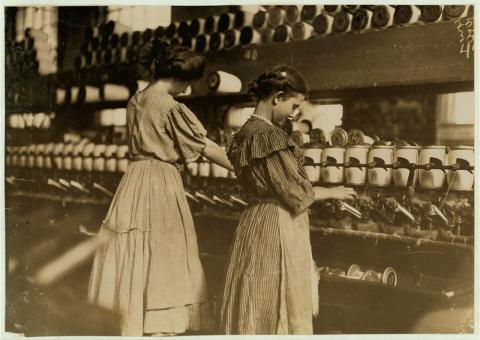
Description
Spoolers ran machines that combined the thread from ten to 15 different bobbins. Operating a spooling frame was not a hard job, unless threads broke and they had to tie the strand back together. Working as an investigative photographer for the National Child Labor Committee, Lewis Hine documented working and living conditions of children in the United States between 1908 and 1924. The photos are useful for the study of labor, reform movements, children, working class families, education, public health, urban and rural housing conditions, industrial and agricultural sites and other aspects of urban and rural life in America in the early 20th Century.
Source-Dependent Questions
- Look closely at the photo and describe the work the young girls are doing.
- Compare this photo to the photo of Sadie, who worked at a cotton mill in a different state. What is similar about the photos? What is different?
- Lewis Hines, who worked for the National Child Labor Committee, took both of these photos of young girls in cotton mills to document working conditions for young children. Why would it be important for everyone to see the working conditions of young children?
Citation Information
Hine, Lewis Wickes, "Lincoln Cotton Mill, Evansville, Ind. Young Girls at Spoolers. Location: Evansville, Indiana," October 1908. Courtesy of Library of Congress